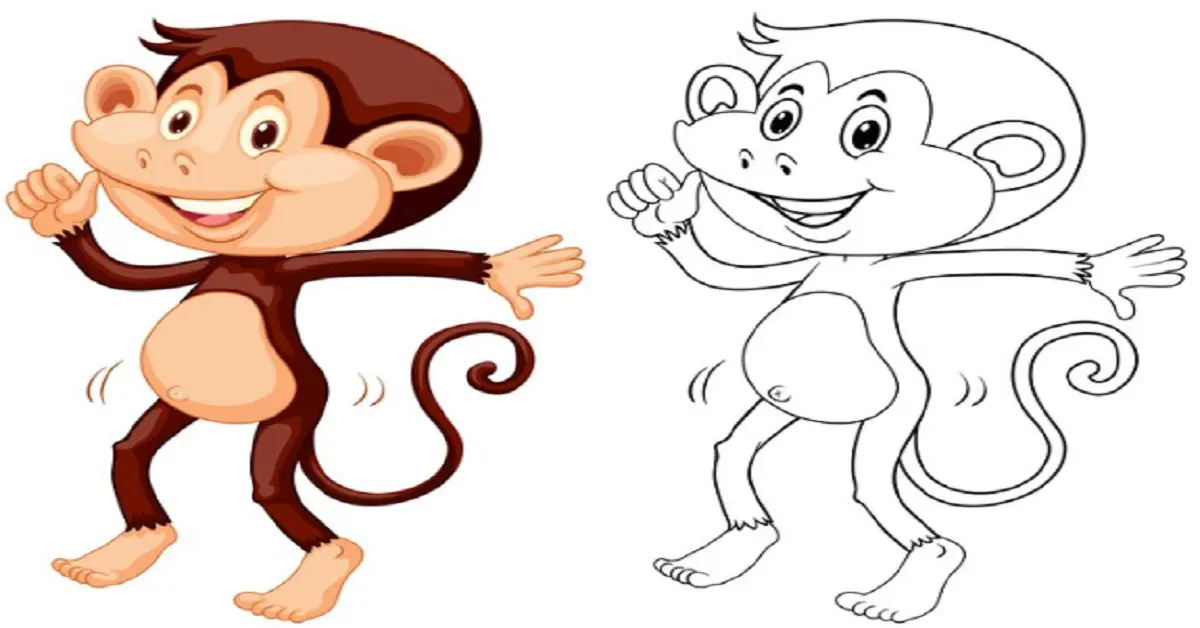Drawing Monkeys: A Fun and Creative Guide

drawing:uqp7yroofp0= monkey .Drawing can be an exciting and rewarding hobby. One of the most delightful subjects to draw is the monkey. These intelligent and playful animals present both a fun challenge and a great opportunity to improve your drawing skills. Whether you’re a seasoned artist or a beginner, this guide will walk you through the steps to create your own monkey masterpiece.
The Basics of Drawing Monkeys
Before you dive into drawing, it’s essential to understand the basic anatomy of a monkey. Monkeys have distinct features such as expressive faces, long limbs, and tails that are often crucial in capturing their playful nature. Knowing these key characteristics will help you create a more accurate and lively drawing.
Understanding Monkey Anatomy
Monkeys come in various shapes and sizes, but they generally share some common anatomical traits. Their bodies are often slim and agile, with limbs adapted for climbing and swinging. Paying attention to these details will make your drawing more realistic.
Essential Drawing Tools
To start, you’ll need some basic tools:
- Pencils (ranging from HB to 6B for different shading effects)
- Erasers (both kneaded and standard)
- Paper (a smooth surface is ideal for detailed work)
- Optional: Colored pencils or markers for adding color
Step-by-Step Guide to Drawing a Monkey
Sketching the Basic Shapes
Begin by lightly sketching the basic shapes that form the monkey’s body. This will serve as a foundation for your drawing.
Drawing the Head
Start with an oval shape for the head. Monkeys often have rounded heads, so ensure your oval isn’t too elongated. Add a horizontal and vertical line to help position the facial features. drawing:uqp7yroofp0= monkey
Drawing the Body
Below the head, draw a larger oval or a bean shape for the body. This shape will vary depending on the type of monkey you’re drawing. Connect the head and body with a neck line.
Adding Details
Now it’s time to add details to your sketch.
Facial Features
Monkeys have expressive faces with prominent eyes, a flat nose, and often a smiling mouth. Use your guidelines to place the eyes symmetrically. Add small circles for the eyes and a curved line for the mouth.
Limbs and Tail
Sketch the limbs as elongated shapes attached to the body. Remember that monkeys’ arms and legs are relatively long. Add a curved line for the tail, adjusting its length based on the monkey species.
Refining the Sketch
With the basic shapes and details in place, refine your sketch by outlining the drawing and erasing unnecessary lines.
Outlining the Drawing
Go over your sketch with a slightly darker pencil or a pen. This will define the monkey’s shape and make the drawing more cohesive.
Erasing Unnecessary Lines
Carefully erase the initial guidelines and any stray marks. This will clean up your drawing and prepare it for shading and coloring. drawing:uqp7yroofp0= monkey
Bringing Your Monkey to Life
Shading and Texturing
Adding shading and texture can give your monkey drawing depth and realism.
Light and Shadow
Decide on a light source for your drawing. Shade the areas that would naturally be in shadow, such as under the chin, inside the ears, and on the opposite side of the light source. Use a blending stump or your finger to smooth out the shading.
Fur Details
To create the appearance of fur, use short, quick strokes with your pencil. Vary the pressure to give the fur texture and dimension. Focus on areas like the monkey’s face, limbs, and tail.
Adding Color
If you want to add color to your drawing, here’s how.
Choosing Your Color Palette
Monkeys can have a wide range of fur colors, from browns and grays to vibrant oranges. Choose a palette that suits the type of monkey you’re drawing.
Coloring Techniques
Use colored pencils or markers to add color. Layer different shades to create depth, and blend colors smoothly for a more natural look. drawing:uqp7yroofp0= monkey
Different Styles of Drawing Monkeys
There are many ways to draw monkeys, from realistic to cartoonish styles.
Realistic vs. Cartoonish
Realistic drawings focus on accurate anatomy and detailed textures. Cartoonish drawings, on the other hand, can exaggerate features for a more whimsical look.
Experimenting with Abstract Styles
Abstract styles allow you to play with shapes and colors, creating a unique and artistic interpretation of a monkey.
Common Mistakes and How to Avoid Them
Even experienced artists can make mistakes. Here are some common ones and how to avoid them.
Proportional Errors
Monkeys’ limbs and tails are often longer than we instinctively draw them. Use reference images and measurements to keep proportions accurate.
Overcomplicating the Sketch
It’s easy to get carried away with details. Start simple and build up details gradually to avoid overwhelming your drawing. drawing:uqp7yroofp0= monkey
Advanced Techniques for Drawing Monkeys
For those looking to take their monkey drawings to the next level, here are some advanced techniques.
Capturing Movement
Monkeys are very active animals. To capture movement, use dynamic lines and poses. Study photos or videos of monkeys in action to understand their movements.
Drawing Monkeys in Different Poses
Practice drawing monkeys in various poses, such as climbing, sitting, or swinging. This will improve your ability to capture their dynamic nature.
Conclusion
drawing:uqp7yroofp0= monkey .Drawing monkeys can be a fun and rewarding experience. By understanding their anatomy, starting with basic shapes, and gradually adding details, you can create lifelike and expressive drawings. Remember to practice regularly and experiment with different styles and techniques.
[…] static content, http://www.goodmooddotcom.com also offers interactive activities that engage visitors in fun and creative ways. From quizzes and games to virtual challenges, these activities are designed to entertain and […]